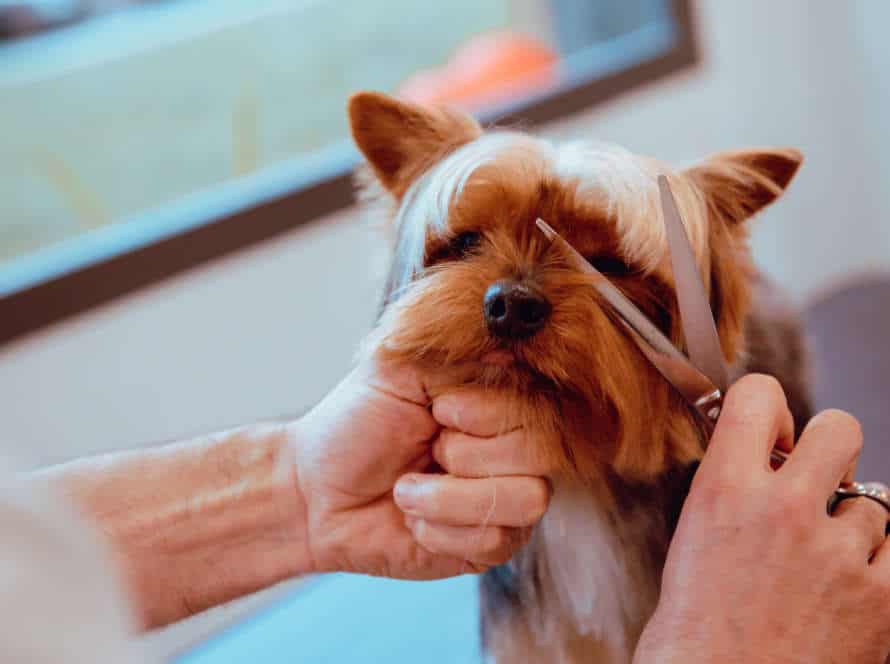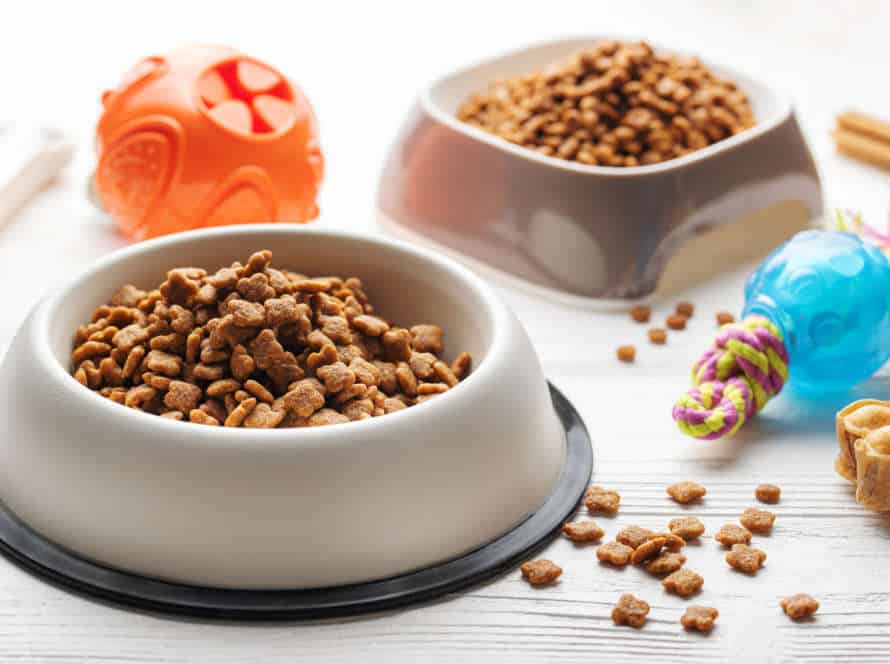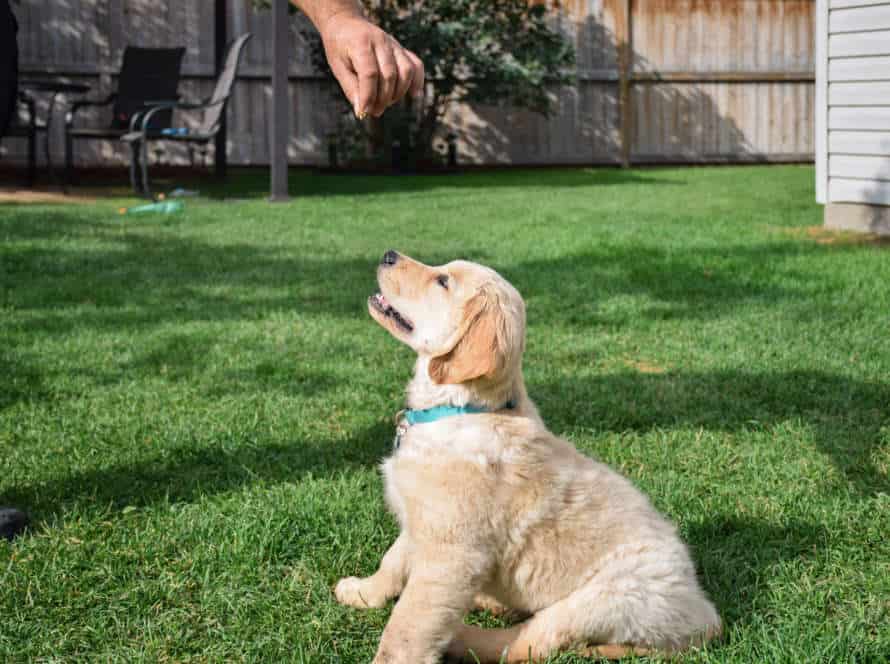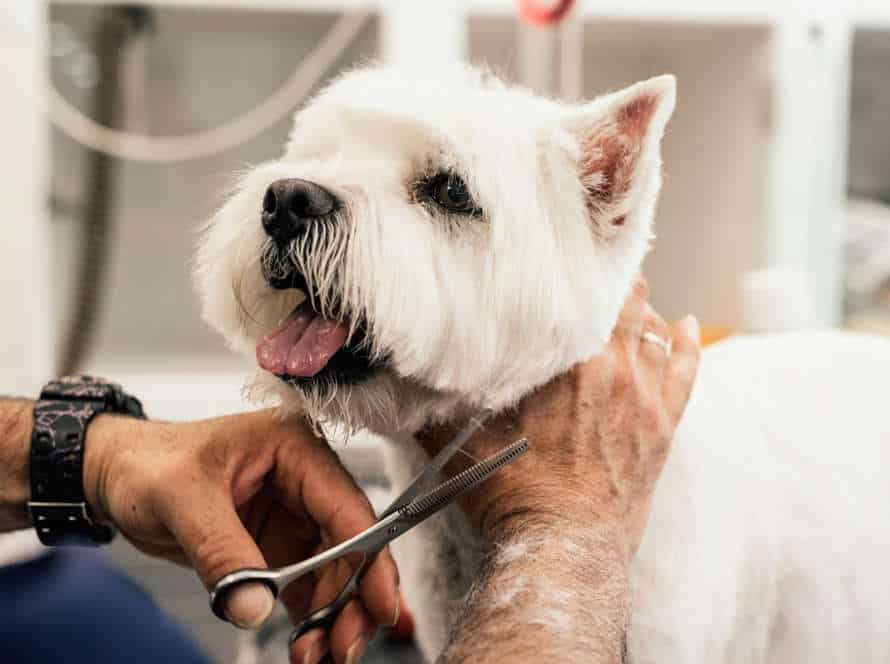Understanding Positive Reinforcement
Positive reinforcement is a great training technique! It’s all about rewarding those desired behaviors. Use it to teach your pup commands, manners, or anything else you want. Mastering this tool is easy – just understand the principles first. Here’s a guide to using positive reinforcement with your dog effectively.
Definition and explanation of Positive Reinforcement Dog Training
Positive reinforcement dog training is based on rewarding good behaviour. When a pup acts how you want, like sitting, lying down, or not pulling on its leash, it gets a treat, toy, or praise. This helps the doggie repeat the good behaviour!
Positive reinforcement training builds positive associations. Instead of dreading punishment, your pup learns to link good behaviour with great rewards. This makes them feel safe and more likely to repeat the behaviour.
By using positive reinforcement, you can teach your pup basic obedience and advanced tasks. Reward good behaviour and ignore or redirect bad behaviour. This makes the training more enjoyable and successful for both you and your pup!
The scientific basis of positive reinforcement and its effect on dogs
Positive reinforcement is a proven training method. It helps pets understand what their owners want. Reward desirable actions with treats or praise! Here are the key principles:
- Timing: Give rewards immediately after desired behavior.
- Consistency: Use positive reinforcement consistently.
- Adequacy: Rewards must be enough to motivate the dog.
- Variety: Change up the reward to keep the dog engaged.
- Limitations: Positive reinforcement isn’t perfect. Use other training methods too. Also, too many treats can lead to obesity. Balance it out!
Comparison with Negative Reinforcement and Punishment-based Training
Positive reinforcement is a training method which rewards good behavior. It’s way more effective and humane than negative reinforcement or punishment-based methods. With negative reinforcement, unpleasant stuff gets taken away to encourage behavior. With punishment-based, something unpleasant is added to discourage it. This can cause fear, anxiety and aggression in dogs, leading to long-term issues.
Positive reinforcement uses rewards like treats, praise and playtime to encourage good behavior. This makes the bond between owner and dog stronger and reinforces positive behavior without causing harm or distress.
Pro tip: Start with simple behaviors like sitting or coming when called. Gradually train your pup to learn more complex stuff. Consistent and patient training are the keys to success with positive reinforcement.
Essential Tools and Techniques for Positive Reinforcement Dog Training
Positive reinforcement dog training is all about teaching your pup that behaviour has consequences. Using rewards and reinforcement, you can instruct your dog how to act positively when given commands and cues.
In this section, we’ll look into the necessary tools and methods for positive reinforcement training. We’ll explain how to use rewards, when to offer reinforcement and which techniques are the best for teaching your doggo the behaviours you desire.
Positive Reinforcement Dog Training Tools and Supplies
Positive reinforcement dog training tools and supplies are essential for owners who want to train their pups with positive and humane methods. Here are some of the most powerful tools and techniques:
- Treats – Powerful motivator to reward good behavior during training.
- Clicker – Small device to signal pup for desired behavior.
- Toys – To reward pup and keep them engaged.
- Leash and Harness – To keep pup under control and safe.
- Positive Reinforcement Verbal Cues – Like “good boy” or “good girl”.
Using these tools can help master positive reinforcement dog training to have a happy, well-behaved pup that is a pleasure to be around!
Clicker Training: Definition and Implementation
Clicker training is a form of positive reinforcement dog training. It uses a click sound to recognize good behaviors and reward them. It’s an effective way to train dogs of all ages and skill levels.
You’ll need a clicker and a treat pouch filled with yummy treats. Follow these steps:
- Pick a quiet area with no distractions.
- Wait for your pup to act like you want them to.
- Click the clicker and give them a treat.
- As you go, make the behaviors more complex.
Pro Tip: Be consistent when clicking and rewarding. That helps make the training successful.
Treat Training: Choosing the Right Treats, and Timing the Rewards
For successful treat training and positive reinforcement dog training, the right treats and proper timing of rewards is key. Here are some tips to help you:
- Select treats your dog loves – think small pieces of cooked chicken or cheese – so they’ll work for the reward.
- Reward your pup at the exact moment of the behavior you want them to learn. For instance, when you want your dog to sit – reward them right away so they get the connection.
- Use a clicker or verbal marker to signal when the desired behavior is happening. This way, your pup knows exactly what they’re being rewarded for.
By using these techniques, your dog will be motivated to please you and learn the behaviors you want from them!
Training your dog with Positive Reinforcement: A Step-by-Step Guide
Positive reinforcement is a brilliant technique to train your doggo buddy! When you reward desired behaviors with treats, praise, rewards and fun, you can form a loyal and respectable bond with your pooch. This guide talks about the fundamentals of positive reinforcement training and provides helpful advice to get the best out of your training sessions.
House Training with Positive Reinforcement
Positive reinforcement is a humane way to train your pup. Here’s a how-to guide!
- Set clear rules and boundaries for your pup, and stick to a consistent routine.
- Use treats, praise, and affection to reward good behaviour, and ignore or redirect unwanted behaviour.
- Be patient and consistent with your training. Start small, and progress to more complex tasks.
- Keep training sessions short, and finish on a positive note.
Mastering these techniques takes time and dedication. But, it’s worth it for a happy and well-behaved pet!
Pro Tip: Positive reinforcement works for other pets, too – cats, birds, hamsters, and rabbits!
Basic Commands training with Positive Reinforcement
Train your pup with positive reinforcement methods. It’s an efficient and humane way to teach basic obedience commands, no matter the breed or age. Positive reinforcement is based on rewards, motivating your pooch to do good deeds. Here’s a step-by-step guide:
- Start with simple commands like “sit” or “stay“.
- Reward your pup with lots of praise, a gentle petting, or a treat for correct behavior.
- Use a distinct marker or clicker sound to signal your dog they did right.
- Regularly repeat the process over time to make the behavior stick.
- Increase command complexity as your pup gets better at learning through positive reinforcement.
Positive reinforcement training is a safe and effective way to encourage good behavior in your pup. It strengthens the bond between you, builds trust, and sets the groundwork for more advanced training. Pro tip: Be patient and make the training experience enjoyable for both you and your furry friend.
Advanced Training with Positive Reinforcement
Positive reinforcement is a great way to train your pup. To take it to the next level, here’s a guide!
- Step one: start with basic tricks before attempting more complex ones.
- Step two: use a clicker or verbal cue to mark good behaviour and reward your dog with a treat or verbal praise.
- Step three: break down the behaviour into small, achievable steps.
- Step four: stay consistent with your training, don’t punish or scold your pup.
- Step five: make positive reinforcement part of your routine and interact with your pet regularly.
In the end, it’s all about building trust, communication, and an unbreakable bond with your furry companion.
Overcoming Common Challenges in Positive Reinforcement Dog Training
Positive reinforcement dog training can be an awesome, effective way to teach your pup! It rewards good behavior and helps to stop bad habits. But it’s not always easy – it takes dedication and a lot of patience. Let’s look at some of the common challenges and how to tackle them.
Effective Redirecting of Unwanted Behaviors with Positive Reinforcement
Positive reinforcement is a method of dog training that is backed by science. It rewards positive actions, but unwanted behavior can still occur. The best approach to redirect it is positive reinforcement. Here are 3 effective ways to do it:
- Introduce a competing behavior. Ask your pup to do something different, like sitting instead of jumping. Reward them with treats, toys, or praise.
- Redirect attention. Interrupt the unwanted behavior with a toy or treat. Redirect their focus to an activity that can be reinforced positively.
- Increase the reinforcement value. Make positive reinforcement more interesting by providing higher quality treats or more playtime.
By using these techniques, you can overcome common challenges in positive reinforcement training and get your furry friend to master it.
Avoiding Over-reliance on Treats in Training
Positive reinforcement dog training often uses treats. But too much reliance on treats can slow progress. Here’s how to avoid over-reliance:
- Offer different rewards. Don’t just give treats. Use words of praise, physical affection, or toys too.
- Shorten the sessions. Keep them short and focused. Stop while your dog is still interested.
- Gradually decrease treats. After mastering the behavior, reduce treats until they’re not needed.
Remember: Positive reinforcement is about building a strong relationship with your dog. Pro tip: Always train your dog according to their personality.
Handling distracting environments and bad habits positively
Positive reinforcement can be a great dog training method! But, handling distracting environments and naughty habits can be tough. Here are some tips to help you out:
- Start with basic commands in a quiet space before moving to noisier places.
- Offer your pup high-value treats as motivation to stay on task.
- Proactively tackle bad habits by redirecting their attention to a good behavior.
- Be patient and consistent. Even small progress should be rewarded.
These techniques will help you manage distractions and bad habits positively and rewardingly.
Maintaining Positive Reinforcement Results and Effectiveness
Positive reinforcement is a great way to train your pup. It needs to be maintained for it to be successful. Let’s look at how to make sure your positive reinforcement works and has long-lasting effects.
Gradual timely reinforcement for long-lasting results
Positive reinforcement is a great way to train your pup. Rewards for good behavior and timely reinforcement are key! Here are some techniques to maintain the effectiveness of positive reinforcement:
- Create a tiered reward system, giving different levels of treats or praise depending on the task.
- Use a clear and consistent command for the desired behavior.
- Time reinforcements carefully to encourage good behavior and discourage bad behavior.
- As the behavior becomes more consistent and reliable, phase out treats and rewards.
- Consistency is essential, so make sure everyone in the household is aware of the same training techniques and commands.
Pro tip – Be patient with your pup and rejoice in every success! Positive reinforcement takes time and effort, but the outcome is a happy and well-trained dog.
Consistency as the key to success in Positive Reinforcement training
Positive reinforcement training is an effective way to teach your pup. Consistency is key for success in the long run. Here are tips for consistency:
- Set clear rules and expectations for your pup. This helps with consistency in your training.
- Make sure everyone in your family follows the same rules and expectations. This prevents confusion for your pup.
- Use the same cues and words consistently. This helps your pup associate the cue with the desired behavior.
- Don’t change your training approach in the middle. Stick to it and make sure everyone around you follows the same.
- Reward good behavior consistently. Be patient, keep practicing and use lots of positive reinforcement techniques to get the desired results.
Pro tip: Regular practice helps you and your pup form a routine and reinforces good behavior.
Effective Training combinations with Positive Reinforcement.
Train your pup with positive reinforcement for the best results! Here are some tips to try:
- Clicker training: Mark desired behavior with a click, then reward. Your dog will learn that clicks mean treats!
- Treats: Small treats can motivate and reinforce good behavior.
- Verbal praise: Simple phrases like “good boy” or “good girl” can go a long way.
- Playtime: Training can be fun when you add playtime!
- Short sessions: Keep ’em short and frequent to maintain focus and motivation.
Using the right techniques and being consistent is key to mastering positive reinforcement. With practice, you’ll be able to shape your pup’s behavior!
Frequently Asked Questions
Q: What is positive reinforcement?
A: Positive reinforcement means rewarding your dog for exhibiting desirable behaviors. This technique involves giving treats, praise, or toys to reinforce good behavior and encourage it to happen again in the future.
Q: Why is positive reinforcement important?
A: Positive reinforcement is the most effective and humane way to train your dog. It builds a strong trust between you and your dog, and creates a positive learning experience for your pet. It also leads to better behavior and reduces the risk of your dog developing anxiety or aggression issues.
Q: How do I incorporate positive reinforcement into my dog’s training?
A: To incorporate positive reinforcement into your dog’s training, you need to first identify what behaviors you want to encourage. Then, you need to choose a reward that your dog finds appealing and give it immediately after the desirable behavior occurs. With consistent practice, your dog will start to associate good behavior with rewards.
Q: Can positive reinforcement be used for all types of dog training?
A: Yes, positive reinforcement can be used for all types of dog training, from obedience training to house training to agility training. It can even be used for complex behaviors such as therapy work or search and rescue training.
Q: Are there any risks associated with positive reinforcement training?
A: There are no risks associated with positive reinforcement training for your dog. However, it’s important to avoid using treats as a crutch and instead focus on gradually reducing the frequency of treats as your dog starts to exhibit the desired behaviors consistently.
Q: How long does it take to see results with positive reinforcement training?
A: The time it takes to see results with positive reinforcement training depends on your dog’s unique personality and behavior. Some dogs may respond quickly to positive reinforcement, while others may take longer. Consistency and patience are crucial to achieving success with positive reinforcement training.







